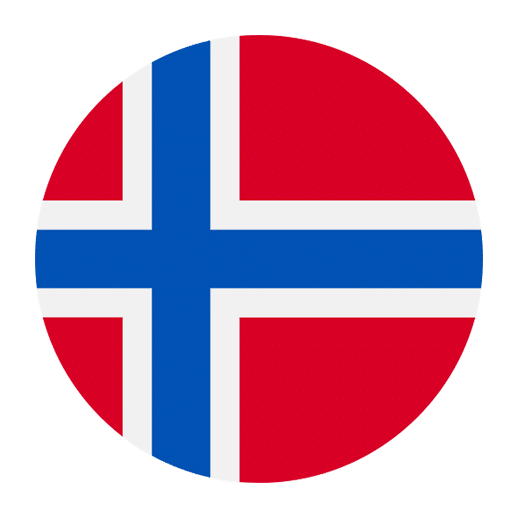Learning a new language can be an exciting and rewarding experience, and Norwegian is no exception. As you delve into the language, one of the essential skills you will need is the ability to express time and dates. This guide will walk you through the basics of how to talk about time and dates in Norwegian, providing you with the tools you need to communicate effectively in everyday situations.
Expressing Time in Norwegian
Understanding how to express time in Norwegian is fundamental for making appointments, planning activities, and even just having casual conversations. Here’s a breakdown of how to tell and ask for the time in Norwegian.
Telling Time
In Norwegian, time is generally expressed using a 24-hour clock. Here’s a basic format to follow:
– **01:00** – Ett (one)
– **02:00** – To (two)
– **03:00** – Tre (three)
– **04:00** – Fire (four)
– **05:00** – Fem (five)
– **06:00** – Seks (six)
– **07:00** – Sju (seven)
– **08:00** – Åtte (eight)
– **09:00** – Ni (nine)
– **10:00** – Ti (ten)
– **11:00** – Elleve (eleven)
– **12:00** – Tolv (twelve)
– **13:00** – Tretten (thirteen)
– **14:00** – Fjorten (fourteen)
– **15:00** – Femten (fifteen)
– **16:00** – Seksten (sixteen)
– **17:00** – Sytten (seventeen)
– **18:00** – Atten (eighteen)
– **19:00** – Nitten (nineteen)
– **20:00** – Tjue (twenty)
– **21:00** – Tjueen (twenty-one)
– **22:00** – Tjueto (twenty-two)
– **23:00** – Tjuetre (twenty-three)
– **24:00** – Tjuefire (twenty-four)
For times that are not on the hour, you can use the word “og” (and) to separate the hour and the minutes. For example:
– **14:30** – Fjorten og tretti (fourteen and thirty)
However, more commonly, times are expressed in conversational terms similar to English:
– **14:30** – Halv tre (half to three, meaning half an hour to three)
– **14:15** – Kvart over to (quarter past two)
– **14:45** – Kvart på tre (quarter to three)
Asking for the Time
When you need to ask for the time, you can use the following phrases:
– “Hva er klokka?” (What time is it?)
– “Hvor mye er klokka?” (How much is the time?)
Responding to these questions is straightforward. For example:
– “Klokka er tre.” (The time is three.)
– “Den er kvart på fire.” (It is quarter to four.)
Expressing Dates in Norwegian
Dates are another crucial aspect of daily communication. Whether you are scheduling an appointment or discussing an event, knowing how to express dates is essential.
Days of the Week
Here are the days of the week in Norwegian:
– Monday – Mandag
– Tuesday – Tirsdag
– Wednesday – Onsdag
– Thursday – Torsdag
– Friday – Fredag
– Saturday – Lørdag
– Sunday – Søndag
In Norwegian, the days of the week are not capitalized unless they begin a sentence. For example:
– “Jeg har en avtale på mandag.” (I have an appointment on Monday.)
Months of the Year
The months of the year in Norwegian are as follows:
– January – Januar
– February – Februar
– March – Mars
– April – April
– May – Mai
– June – Juni
– July – Juli
– August – August
– September – September
– October – Oktober
– November – November
– December – Desember
Again, months are not capitalized unless they begin a sentence. For instance:
– “Hun har bursdag i mars.” (Her birthday is in March.)
Writing Dates
When writing dates in Norwegian, the day comes before the month, similar to the format used in many European countries. The most common format is **DD.MM.YYYY**. For example:
– **15.07.2023** – 15th of July, 2023
In spoken Norwegian, you might say:
– “Femten juli to tusen og tjuetre.” (Fifteenth of July, two thousand and twenty-three)
Ordinal Numbers
When discussing dates, ordinal numbers are often used. Here are the ordinal numbers from 1 to 31 in Norwegian:
– First – Første
– Second – Andre
– Third – Tredje
– Fourth – Fjerde
– Fifth – Femte
– Sixth – Sjette
– Seventh – Sjuende
– Eighth – Åttende
– Ninth – Niende
– Tenth – Tiende
– Eleventh – Ellevte
– Twelfth – Tolvte
– Thirteenth – Trettende
– Fourteenth – Fjortende
– Fifteenth – Femtende
– Sixteenth – Sekstende
– Seventeenth – Syttende
– Eighteenth – Attende
– Nineteenth – Nittende
– Twentieth – Tjuende
– Twenty-first – Tjueførste
– Twenty-second – Tjueandre
– Twenty-third – Tjuetredje
– Twenty-fourth – Tjuefjerde
– Twenty-fifth – Tjuefemte
– Twenty-sixth – Tjuesjette
– Twenty-seventh – Tjuesjuende
– Twenty-eighth – Tjueåttende
– Twenty-ninth – Tjueniende
– Thirtieth – Trettiende
– Thirty-first – Trettiførste
For example:
– “Jeg har bursdag den tjuefemte mai.” (My birthday is on the twenty-fifth of May.)
Common Expressions Involving Time and Dates
To make your conversations smoother, here are some common expressions involving time and dates:
– “I dag” – Today
– “I morgen” – Tomorrow
– “I går” – Yesterday
– “Neste uke” – Next week
– “Forrige uke” – Last week
– “Neste måned” – Next month
– “Forrige måned” – Last month
– “Neste år” – Next year
– “Forrige år” – Last year
For example:
– “Jeg skal på ferie neste uke.” (I am going on holiday next week.)
– “Vi møttes forrige måned.” (We met last month.)
Practice Makes Perfect
The best way to become proficient in expressing time and dates in Norwegian is through practice. Try incorporating these phrases and structures into your daily conversations. Here are a few exercises to help you practice:
1. **Translate the following sentences into Norwegian:**
– I have a meeting at 3 PM.
– Her birthday is on the 10th of October.
– What time is it?
– We will travel in December.
2. **Convert the following times into Norwegian:**
– 14:45
– 09:15
– 18:30
– 23:00
3. **Write the following dates in the Norwegian format:**
– 5th of January, 2023
– 22nd of June, 2024
– 17th of May, 2022
4. **Use ordinal numbers to express these dates in Norwegian:**
– 3rd of March
– 1st of January
– 29th of February
By regularly practicing these exercises, you will become more comfortable and confident in using Norwegian to express time and dates. Remember, the key to mastering any language is consistent practice and real-life application.
In conclusion, expressing time and dates in Norwegian is a vital skill that will enhance your ability to communicate effectively. Whether you’re planning your next trip to Norway or simply want to improve your language proficiency, understanding how to tell time and discuss dates is an essential part of your language-learning journey. Happy learning!

